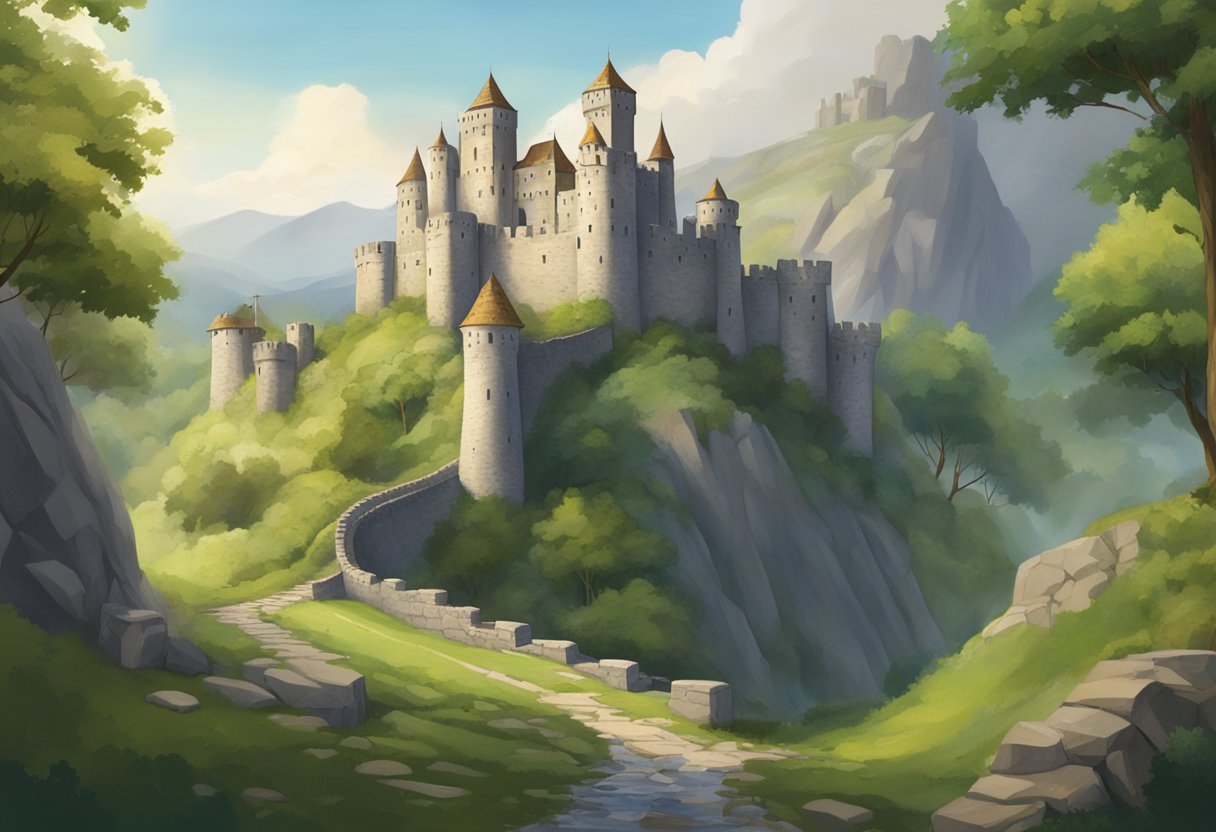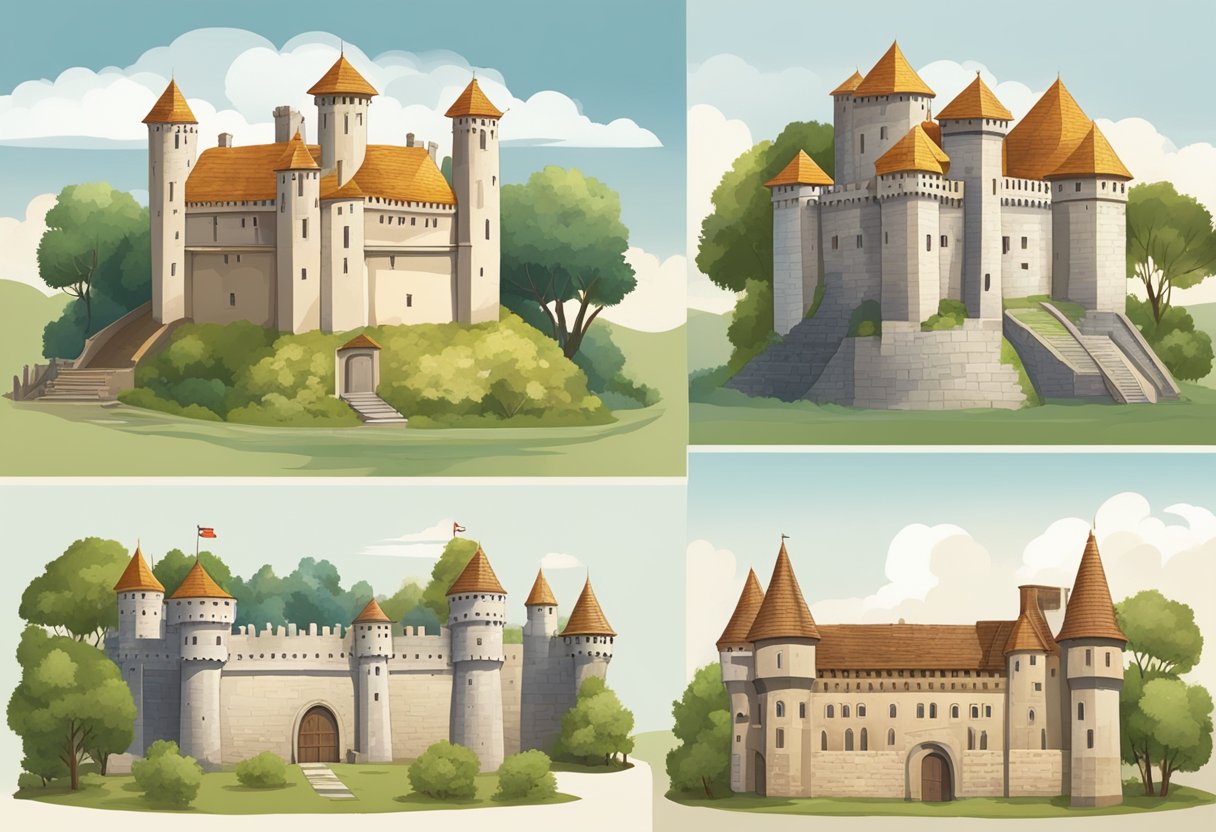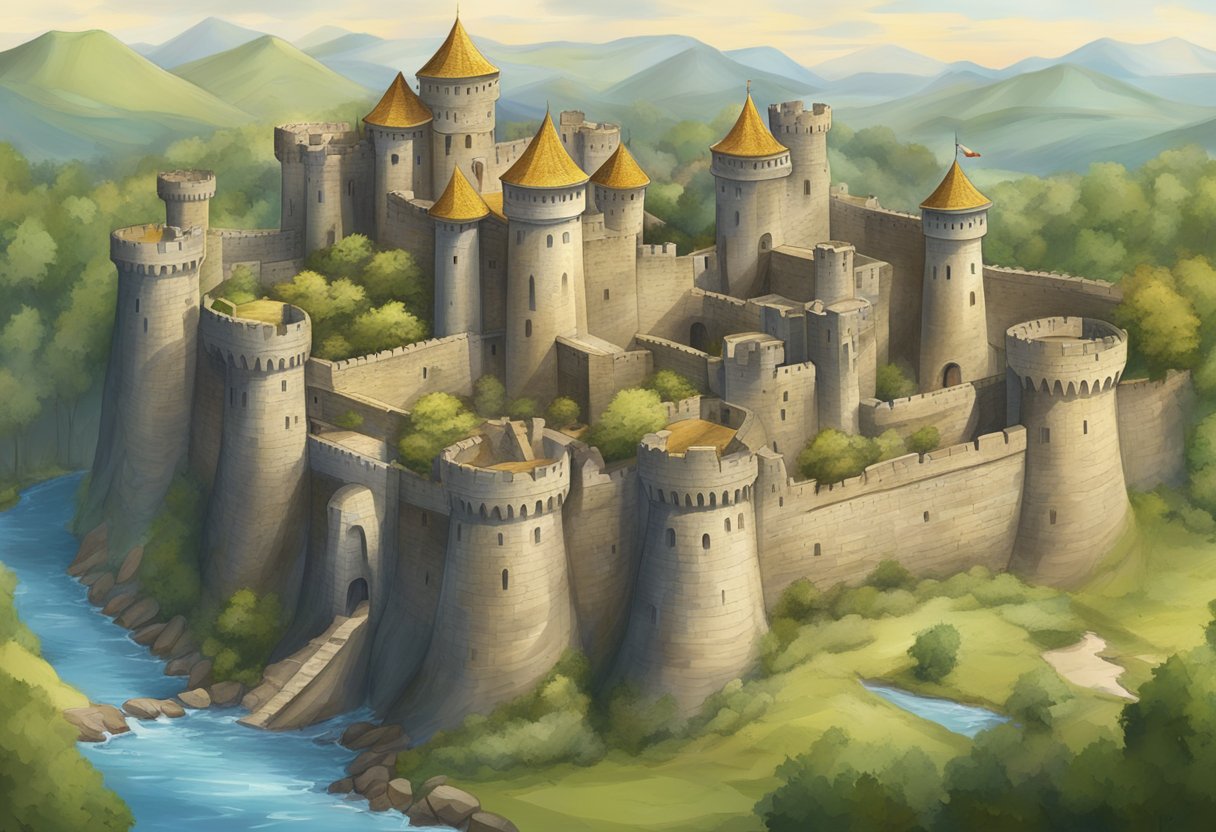When visiting the grand remnants of history, one might wonder if every grande structure flanked by battlements and surrounded by moats qualifies as a castle, or if some might be better termed as forts. After all, both seem rather imposing with their thick walls and towering presences. Yet, the intricacies of medieval architecture suggest that not all fairy tale illustrations of mighty strongholds tell the same story. Essentially, a castle is a private, fortified residence, often inhabited by nobility or royalty. By contrast, forts are strategic military strongholds, primarily designed for defense against enemies, not as lavish homesteads.

The concept of castles and forts has evolved over the centuries. Initially, the primary purpose of a castle extended beyond just a noble abode—it was about protection and asserting dominance over a territory. It provided a home base for lords, a status symbol, and an outpost to launch offensive maneuvers. However, as needs shifted over time, the functions of these structures diversified. Some castles became peaceful manor homes while others fell into ruin, their once-imposing silhouettes now serving as stunning backdrops for tourists flocking to capture a glimpse of a bygone era. As for forts, they have remained tactically relevant, evolving with advancements in military technology and strategy.
Key Takeaways
- Castles are fortified residences with a touch of nobility, while forts are no-frills military strongholds.
- Both castles and forts have shifted roles throughout history, from power seats to tourist hotspots and modern military use.
- The majesty of castles and the might of forts have fascinated people for generations, inspiring everything from romantic tales to epic sagas.
Historical Evolution of Fortified Residences

The saga of fortified residences tells tale of human ingenuity – their walls and towers rising with the ages from humble turf ramparts to awe-inspiring edifices of stone.
From Roman Castrum to Medieval Stronghold
From the collapse of the Western Roman Empire, humanity had quite the fixer-upper challenge. A Roman castrum was not just a fort; it was the Fort Knox of its day, sturdy and square, safeguarding legionaries with its imposing presence. Enter the 9th century, and Europe’s hotel scene got a major upgrade. Motte-and-bailey castles were a hit among the medieval elite, combining earthworks with timber – a sort of rustic charm with a defensive flair.
- 9th Century: The motte-and-bailey set-up, a best-seller in castle design catalogs.
- 10th-12th Centuries: Stone starts showing up; it’s not just for skipping across ponds anymore.
Rise of the Gothic Castle
As the fine folks in the Middle Ages were flipping through the pages of “Better Homes and Gardens: Siege Edition,” they realized wood was out and stone was in. Gothic architecture waltzed onto the scene in the 12th century with a flourish, bringing ribbed vaults, flying buttresses, and pointy arches that made castles not only sturdier but quite the lookers too.
- 12th Century: Gothic castles crank the ‘wow’ factor to 11, featuring designs that probably inspired every fairy-tale castle you’ve ever seen.
- 16th Century: Like any aging rock star, castles start to lose their mojo as cannons and gunpowder change the defense game.
Through every century, humans have expertly played architectural Tetris, with defense strategies fitting together to protect and impress. From the stern Roman forts to the gravity-defying Gothic masterpieces, the history of fortified residences is as layered as the stonework in their grand halls.
Architectural Anatomy of Castle-Forts
https://www.youtube.com/watch?v=ZX10qVoBaiU&embed=true
One might think a castle is just an oversized dollhouse for the armored elite, but in reality, it’s a powerhouse of defense mechanisms.
Not Just a Fancy Tower: The Keep
The keep, often mistaken as just a lord’s lofty lair, served as the fortified nexus of a castle. It wasn’t where they held karaoke nights, but a stronghold designed for the gritty business of survival during sieges. Typically situated on a raised mound called a motte, this central keep towered over the surrounding land, providing a strategic vantage point for spotting trouble, such as that one unruly dragon or the occasional marauding invaders who skipped invitations to the royal tea party.
- Design: Compact, with mighty thick walls.
- Function: Residential space, last line of defense.
Defensive Measures: Moats to Battlements
A castle without its fortifications would be like a knight without his armor—seriously undressed. Moats weren’t just medieval swimming pools; they were water-based barriers hungry for uninvited guests. Curtain walls wrapped around the castle like a stone hug, punctuated by battlements where archers could play hide and seek with attackers.
- Moats: More than just decorative water features.
- Curtain Walls: The ultimate line of defense before things get personal.
- Battlements: Notched parapets providing cover for defenders; archer notches sometimes shaped suspiciously like smiley faces.
Merging Might and Majesty: Functions Over Time

Castles have long stood at the crossroads of defensive necessity and opulent living, their thick walls whispering tales of military strategy and echoing with the laughter of royal banquets.
Royal Residence or Military Bastion?
In the early Middle Ages, castles served primarily as the military strongholds of the realm. With their imposing fortifications and strategic locations, they showcased a noble lord or monarch’s ability to defend their lands from invaders and rebellious vassals.
- Military Might
- Employment of heavy fortifications
- Location in strategic vantage points
- Royal Dwellings
- Representation of wealth and power
- Centers of governance and societal control
As the needs and desires of these blue-blooded figures evolved, their stone residences came to be as much about power projection as they were about archers and armor. Castles began to embrace elements of luxury and residential refinement, morphing into magnificent palaces that communicated the wealth and taste of their influential owners.
Evolving Roles: From Nobility to Tourist Hotspot
Despite their rugged origins, castles did not remain stagnant in their role—far from it! As peace gradually settled over certain regions and the need for constant defense waned, many castles underwent a Cinderella-like transformation.
Noble Retreats
- Conversion into opulent estates
- Focus on comfort and displaying nobility
Public Spectacles
- Adaptation into symbols of heritage
- New life as tourist attractions
No longer merely military installations, these formidable fortresses took on new life as historical exhibits—complete with gift shops. Many a tourist flock to these sites, where once the hustle was all about defending against siege engines, now it’s about racing to the castle café for that perfect slice of medieval-themed cake. Whether it’s because of their storybook appearance or the sense that one could bump into a knight around every corner, castles have cemented themselves as can’t-miss stops on travelers’ itineraries.
Castles, Forts, and the Game of Thrones
https://www.youtube.com/watch?v=9z-i6gQhYiw&embed=true
Before pitting European fortresses against Japanese citadels or diving into the strategic elegance of star forts, one must acknowledge the whimsical yet cutthroat world of Game of Thrones. In this fantastical realm, castles are not just buildings; they embody power, heritage, and the occasional dramatic plot twist.
Fortresses of Europe vs. Citadels of Japan
The fortresses of Europe, with their imposing stone walls and deep moats, were a significant part of the medieval landscape. They whispered tales of knights and sieges, symbolizing strength and feudal power. On another continent, the citadels of Japan, with their unique tiered architecture and samurai guardians, spoke of a different, yet no less formidable, form of domain defense.
- Europe: Medieval fortresses were often the homes of lords, with castles like England’s Windsor Castle embodying the pinnacle of defensive and residential design.
- Japan: By contrast, Japanese citadels such as Himeji Castle flaunted grace and utility, with sloped walls specifically to deflect enemy attacks.
Star Forts: The Unsung Heroes of Sapping
Then, there are the star forts, geometric wonders of military architecture that rarely get the limelight they deserve, mostly because they don’t have pet dragons or faceless men lurking in their shadows. Born out of necessity to adapt to advancements in artillery, these forts showcased angles that made defenders cheer and attackers weep.
- France’s Vauban: A master of fortification, he waved his magic wand to transform mundane medieval walls into star-shaped bastions of security.
- Star Forts: Ingenious in design, they utilized triangular bastions to fend off sapping, a method where attackers dig tunnels to collapse fort walls.
Let it not escape one’s notice that while Game of Thrones might not feature literal star forts, the essence of their strategic importance is mirrored in the cunningly defended castles across Westeros, such as the impregnable Eyrie and the vast, awe-inspiring Winterfell.


Leave a Reply